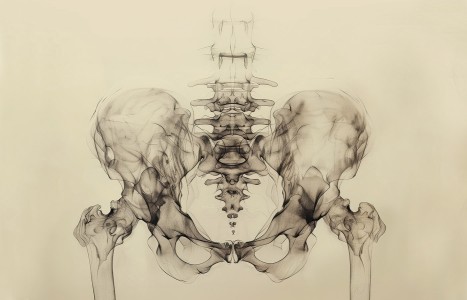People today want convenience, whether it be from their bank, credit card, favorite retail store, or restaurant. They demand it from the companies who hold their loyalty, including their health care providers (you). They don’t want to call and possibly be put on hold, and they want to use an app or schedule an appointment on your website. Here are three reasons your practice can gain by switching to online appointment scheduling.
From a Patient's Perspective: Creating Trusting Practitioner Patient Relationships
There are things I never thought I'd let an acupuncturist do to me. When I first started seeing an acupuncturist five years ago, I had a list of procedures and points that were off the table. Not only did I imagine that many procedures would be painful, but I also didn't know enough about them to consider them anything other than strange. I would not allow cupping, bleeding, tuina or scraping. The list of points I refused to consider included anything on my face, all points that required significant disrobing and any point that I thought might really hurt. I also refused herbs with "yucky" ingredients in the formula. In short, I was an acupuncturist's nightmare patient.
A New Experience
Recently, my regular practitioner was out of the country for a month. I needed to see someone else in her stead. Given that my case is complicated and I'm often none-too-easy to deal with, she and I decided that we would ask a friend of mine to treat me. He's good natured, has a great deal of experience, and is familiar with my case. He also doesn't generally treat me because of our friendship. But there was no one else who could do it and so he agreed.
I went to my first treatment on my very best behavior. I sat down and recapped my symptoms and issues. I answered the practitioner's questions. I let him take my pulse and look at my tongue. He wrote on my chart. I waited for his pronouncement.
He said that since I had not been improving recently, and in fact had been quite ill, that he was going to take a completely different approach to my treatment than what his colleague had done in the past. I had not been out of bed much for the better part of a month, so the idea sounded good to me. I asked what this new treatment plan would involve. The practitioner was kind, but said in essence, "A lot of things you haven't been willing to let a practitioner do before."
Welcome to Cupping
Cupping was the first new part of the practitioner's treatment plan. Honestly, I wasn't sure about it. I had seen photos of people who had been terribly bruised from cupping. I imagined myself having difficulty lying down or sleeping from the bruising. I had also seen cupping done with alcohol and fire and wanted no part of that. I envisioned my hair getting caught on fire and the smell of burnt hair hanging in the room for the whole treatment. I looked at the practitioner and told him my fears. He said that he would not use any fire and that if there was bruising, it would be minimal, not at all what I had seen in those photos. I listened carefully and then I agreed to the cupping procedure.
I didn't agree to the treatment because the practitioner is a friend. I'm not the type who will jump off a cliff because a friend asked me to. I agreed to the treatment because I could tell in the practitioner's demeanor and speech that he both believed that this treatment was the best course of action for me and because of the combination of confidence and gentleness in his manner. In a sense, he didn't care if I agreed to the treatment or not. What he cared about was that my pain diminished enough so that I could return to my normal, active lifestyle. He saw that my hurdle to letting him help me was misinformation and fear; he took the time to help me get over that hurdle.
I'll admit it. I kind of liked the cupping. It felt weird and uncomfortable while he was doing the procedure, but there was also an immediate release of tension and stagnation from the muscles in my back. While I was initially uncomfortable and on edge at the start of the procedure, by the end I was relaxed and ready for the acupuncture portion of my treatment.
Fear of some Points
K1 was one of the points on my "no way" list. I mean really, a needle in the bottom of my foot? How is that possibly going to be anything other than a study in pain?
Of course, K1 was one of the first points the practitioner wanted to use. I sat up on the treatment table as he touched the bottom of my foot and asked him if he was mad. "You're not sticking a needle into the bottom of my foot!" I exclaimed.
The practitioner looked at me with a stern, almost paternal gaze. "It's the point you need," he said as he continued to palpate the area. He seemed unperturbed by my outburst.
I stared at him for a long moment. Did I want to get better? The cupping had seemed like a bad idea, but had turned out much better than I expected. I looked at him longer. "It's going to hurt," I complained.
"Not the way I do it," he replied.
I had a choice to make. This man was doing me a great favor. His practice was full. He worked overtime to see me. He had other things that needed his attention, but he was willing to treat me because I needed treatment and I needed it from someone of his caliber and experience. I studied him as he worked, poking at my feet and preparing his needle. He was not, in this instance, my friend; he was a true professional who was there to help me.
I lay back on the table, grabbing the sides hard, awaiting the needle's knife-like penetration of my soft footpad. The practitioner pressed hard on the bottom of my foot just beside the point where he wanted to needle. I hardly felt the needle go in.
Bleeding
A few weeks later, I suddenly developed a great, painful swelling in the palm of my hand. It came out of nowhere and was about the size of an unshelled pistachio. After four hours of pain with no reduction in the swelling, I emailed my friend with my symptoms and said the magic words, "I think it needs to be bled." His office called me immediately to squeeze me in later that afternoon.
The practitioner did not need to convince me to have bleeding done. I innately knew that this was the proper procedure for the problem. Being that the swelling was already painful and in the center of my hand, I knew the treatment would be unpleasant. I went for the appointment anyway.
What led me to have the bleeding procedure done instead of staying home and suffering was the way in which the practitioner had treated me during the cupping treatment and K1 needling. I recalled his kindness and forthrightness, the way he did not push or condescend. He had built trust with me and so I let him treat me with all the tools in his arsenal.
The bleeding treatment was in a word, fascinating. I was bled in the hand and also the ankle. The blood that came from my ankle was the darkest, thickest blood I had ever seen. Watching it flow from my ankle, I had a new understanding of what blood stagnation means physiologically. I know I won't ever be afraid to be bled again, if there is need.
Challenges to overcome
I am still a difficult patient. If a practitioner leaves me alone in a room too long, it is entirely possible that I will get upset or frightened and start removing needles before the treatment is done. I argue. I have bad habits. But, I find that with the right practitioner, one who is patient, who explains what he is doing and who understands my fears and misgivings, that I'll submit to just about anything. And when it is over, I'll be glad that I had the treatment.
At the end of my regular practitioner's vacation, I found that my pain was gone and I was mostly able to resume my normal activities. I wasn't cured, but I was on the road to recovery thanks to a practitioner who believes in developing the trust of his patients.


